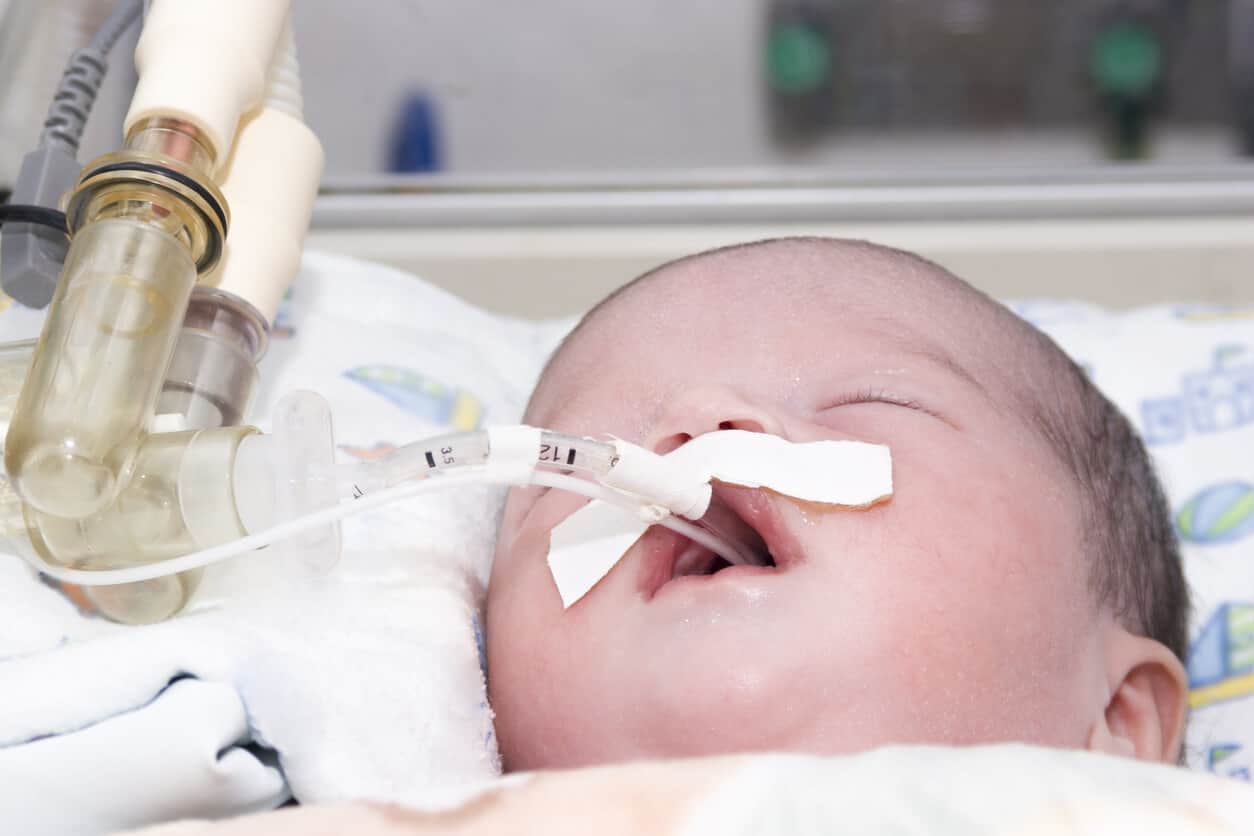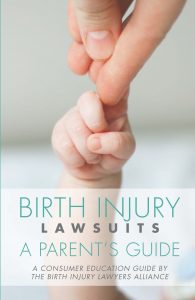
“What caused my baby’s brain injury?” This is probably one of the most common questions that parents ask us. This article reviews the process that the experienced birth injury lawyers at BILA follow in order to answer this important question.
Most common cause of birth injury
One of the most common causes of birth injury is oxygen deprivation to the fetus during labour and delivery. The brain injury resulting from oxygen deprivation in a full-term baby is referred to as hypoxic ischemic encephalopathy (HIE).
The term “hypoxic” refers to a decrease in the level of oxygen in the blood. Ischemic is the medical term for a reduction in blood flow. Encephalopathy refers to brain sickness or injury.
Two challenges
Your child’s legal team faces two challenges when trying to prove that a baby’s injury was caused by HIE. First, we must establish the mechanism of injury; that your child’s injury was caused by either hypoxia or ischemia. Second, we must prove the timing of the injury; that it occurred during labour and delivery at a time when the healthcare providers could have intervened to deliver your baby before neurological injury occurred.
Flawed guidelines
In 2004 the American College of Obstetricians and Gynecologists (ACOG) published guidelines that supposedly indicate when doctors can make a diagnosis of cerebral palsy caused by oxygen deprivation during delivery. In 2007 the guidelines were more or less adopted by the Society of Obstetricians and Gynecologists of Canada (SOGC). In 2014 the ACOG guidelines were amended. The problem is that the scientific basis for the guidelines is flawed and the guidelines have been criticized by articles published by many doctors and lawyers, including Richard Halpern, the Ontario member of the Birth Injury Lawyers Alliance.
Guidelines created to help defend birth injury lawsuits
The reason the ACOG and SOGC guidelines are important is because they are often relied on by defendants in obstetrical cases to try to show that the injury to the child did not happen as a result of oxygen deprivation or, alternatively, occurred before labour and delivery. In other words, the guidelines are used to deny compensation to babies who have suffered cerebral palsy as a result of birth injury.
How to counter the ACOG/SOGC “junk science” guidelines
It is essential that the legal team representing a birth injured child be familiar with the guidelines and, more importantly, understand all the scientific reasons why the guidelines are unreliable. The legal team must be familiar with the most current medical literature. They must be able to formulate a reasonable medical explanation about the cause of injury. They must know the right questions to ask their medical experts. Finally, and most crucially, they must know when the opposing experts are basing their opinions on “junk” science.
8 areas that must be reviewed
There are a number of issues that your legal team must review when preparing a birth injury claim in order to determine whether your baby’s injury was probably caused by negligence. Here are 8 of the most important things you need to know in order to determine if your baby was injured due to medical negligence.
- Are there other more likely causes of the injury? Is there evidence that would support a conclusion the injury was caused by something other than oxygen deprivation at or around the time of birth? This would include an analysis of such things as premature birth, critically low blood sugars (hypoglycemia), excessive bilirubin (kernicterus), stroke, genetics and trauma resulting from the use of forceps or vacuum.
- The fetal heart rate during labour and delivery tells the story of how the fetus was tolerating labour. There is some debate about the value of fetal heart rate data. That is why your legal team must be able to read and interpret fetal heart monitor tracings.
- Apgar scores: Shortly after your baby is born a nurse or physician will do a quick assessment of your baby at 1, 5, and 10 minutes. The assessment, called an APGAR score provides some information in relation to the baby’s overall health.
- Umbilical cord blood gases: At the time of delivery samples of blood are taken from the umbilical cord and submitted to the hospital lab for analysis. The laboratory analysis of the blood may provide indirect evidence of the degree of oxygen deprivation during the later stages of the labour. In many cases, the cord blood gas results are crucially important to the causation question. In the other cases, the blood gas results may not be helpful in that analysis.
- Imaging: It is common for babies who have suffered a brain injury to undergo imaging of the baby which often includes ultrasound, CT scans, and MRIs. Pediatric neuro-radiologists who review this imaging can often provide opinions on the cause of the injury and its timing. Imaging of the newborn’s brain is vitally important to every assessment of causation. Your legal team must understand the types of patterns of brain injury that are associated with oxygen deprivation and how they can be revealed on medical imaging.
- Evidence of a neurological insult: A critical review of the medical records will often show some evidence of a neurological injury in the form of seizures or tremors. The existence of seizures or tremors within the first 24 hours of the baby’s life is consistent with a brain injury occurring during the time of labour and delivery.
- Multisystem involvement: Fetuses tend to be remarkably resilient to episodes of oxygen deprivation. One way that a fetus compensates from oxygen deprivation that has been ongoing for a period of time is to divert oxygenated blood to the most vital organs, including the fetal brain, the heart, and the adrenal glands. This preferential shunting of the oxygenated blood to the essential organs means that other organs may be deprived of the supply of oxygenated blood and may suffer some injury, though often transient or temporary. If the blood tests from the newborn baby show abnormalities in kidney or liver function this would be consistent with the fetal shunting of blood away from those organs during the time of oxygen deprivation.
- Cerebral palsy of a particular type: The guideline requirements for the SOGC indicate that certain types of cerebral palsy must be present before the conclusion can be made that the injury was due to oxygen deprivation during labour and delivery. In a subsequent article, we will explain the fallacy behind this guideline requirement.
Want more information about Birth Injury Claims?

You can download a copy of the book for free or you can call us, toll-free at 1-800-300 BILA (5452) and we will send you a print copy at no charge.
The book is also for sale on Amazon.ca (all proceeds from sales are donated to charity).

John McKiggan, QC has represented clients in pediatric and adult injury claims that have resulted in multi-million dollar awards. In recognition of his accomplishments, John has been honoured by his peers, who elected him president of the Atlantic Provinces Trial Lawyers Association. He has also been named Queen’s Counsel, a designation recognizing exceptional professional merit. John has been selected for inclusion in the Best Lawyers in Canada in the field of personal injury law, he is listed in the Canadian Legal Lexpert Directory and has been named a local litigation star by Benchmark Litigation Canada.
